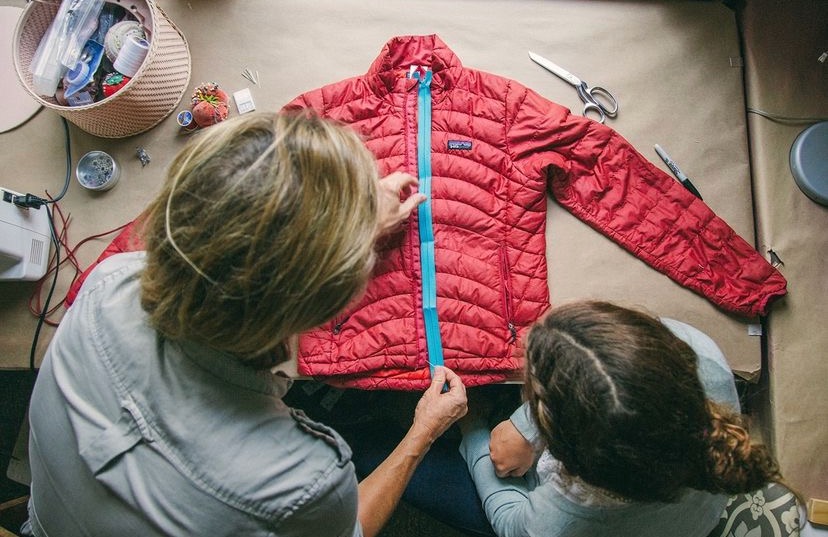Upcycling changes the fashion game
Photo courtesy of @wornwear on instagram.
Patagonia’s ReCrafted clothing line through Worn Wear allows customers to purchase and send in up-cycled pieces.
June 10, 2022
The three Rs. Reduce, reuse, recycle. It’s the most common phrase taught to young kids about how they can help the environment. However, oftentimes recycling diminishes the value of an already used product. The term, “upcycling,” which can be defined as creating products that hold a higher value than the original product, broadened the idea of recycling and offers a new method of conscious consumption. Upcycling should be implemented by students and apparel companies to reduce landfill waste.
Although the term “upcycling” was coined in 1994 by a German engineer, Reiner Pliz, it went mainstream in 2002 with Michael Braungart and William McDonough’s book called “Cradle to Cradle: Remaking the Way We Make Things.” There are endless amounts of products that can be upcycled, ranging from glass and metals to wood and plastic. Yet, one of the most important and relevant products relevant to students is textile and clothing waste.
According to the United States Environmental Protection Agency, approximately 11.3 million tons of textiles were dumped into landfills in 2018 alone. Textile waste breaks down slowly, releases toxins and contributes to greenhouse gas emissions.
With more and more clothing waste being left in landfills, upcycling offers an effective solution to reduce the need for mass production of goods, the negative environmental impact, as well as slowing down waste that eventually ends up in landfills. Students need to be doing more to upcycle and contribute to the solution.
Thrifting is definitely one of the most ideal ways for students to become involved in upcycling because it saves clothing from ending up in landfills. Not only does sorting through clothing racks at the local Uptown Cheapskate or Planet Aid Thrift Store give shoppers considerably lower prices, but it allows for creativity. Whether it’s a white t-shirt for tie-dyeing or a pair of jeans to be cut into shorts for the summertime, the possibilities for upcycling and thrift-flipping clothing are endless.
WCHS students aren’t the only ones who should be upcycling. Celebrities and other apparel companies easily have the platform to spread awareness about upcycling and sustainable fashion. At the 2022 Met Gala, Shawn Mendes wore an upcycled red and navy blue Tommy Hilfiger coat made out of deadstock fabric. In his short Vogue interview with Emma Chamberlain, the first thing that Mendes made sure to mention was that his coat was completely upcycled and that he was proud to be wearing it.
Levi’s “Repair. Reimagine. Recycle.” initiative beginning in January 2020 embodies upcycling to its fullest. The reputable apparel company known for its signature denim partnered with Cotton Inc.’s Blue Jeans Go Green Program, where customers can drop off their jeans to be upcycled. These jeans can then be bought secondhand by another customer or transformed into a custom product such as denim shorts, wallets and patches.
Additionally, the outdoor clothing brand, Patagonia is another example of apparel companies encouraging conscious consumption and upcycling. Patagonia’s ReCrafted clothing line features items made from used clothing scraps. Customers can send their old, damaged or used Patagonia items back through the Worn Wear program and from there they are reconstructed into new clothing products, sold on their website.
Some may argue that making new purchases are fun and exciting because they allow us to experience new things and may even boost serotonin. Regardless, it is crucial for students as well as apparel companies to make efforts to practice upcycling to reduce landfill waste and slow down the never-ending release of toxins into our atmosphere. Along with every person, WCHS students have the potential to be conscious consumers and take upcycling into their own hands.




Ben • Jun 11, 2022 at 2:03 pm
Excellent article! Well-written and very persuasive.